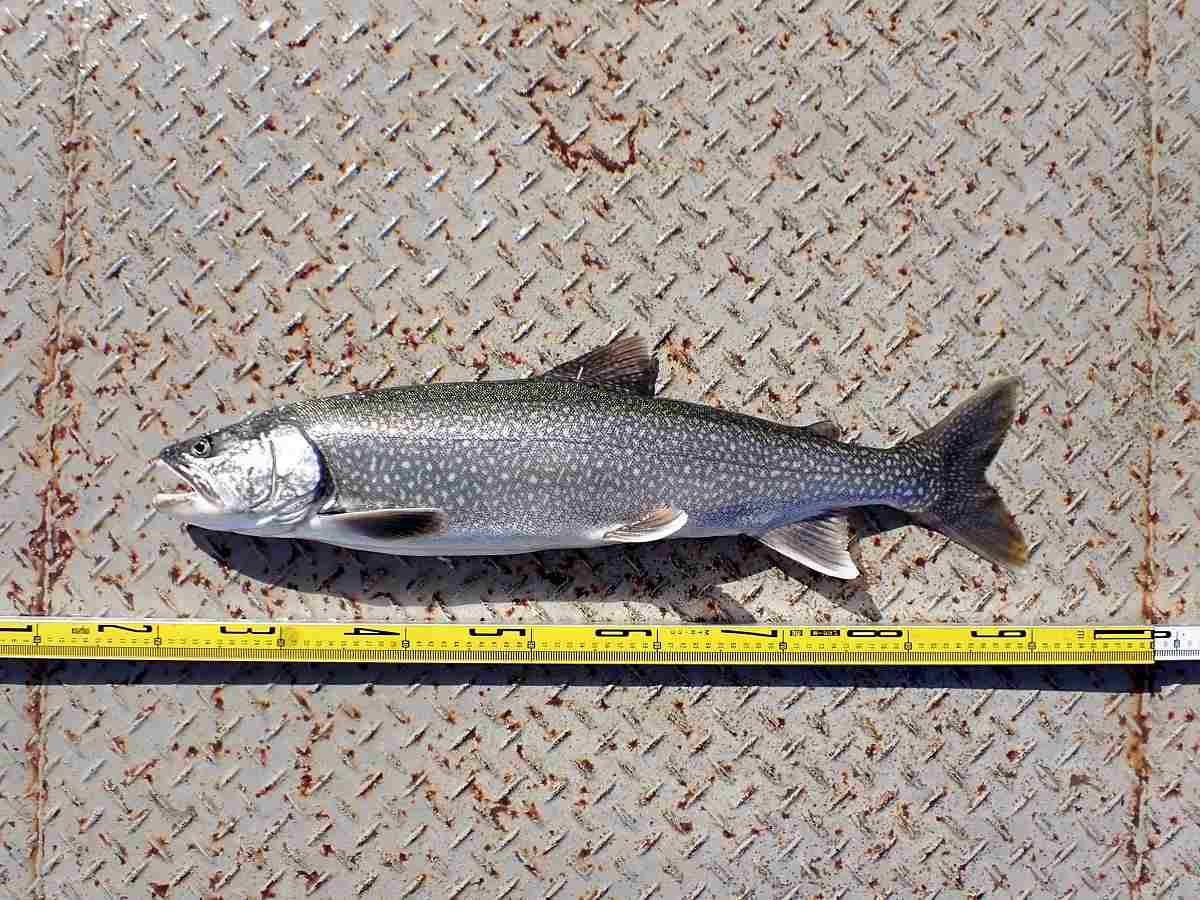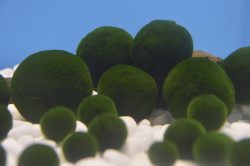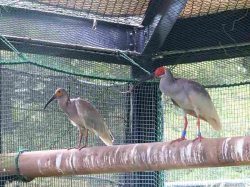Invasive Trout Devouring Native Salmon In Lake Motosu; Anglers Face Environmental Crisis At Foot Of Mt. Fuji

A Yamanashi prefectural government official releases a lake trout with a transmitter in its body into Lake Motosu in Yamanashi Prefecture in April.
1:00 JST, November 1, 2024
Due to the propagation of an alien species of fish, the number of himemasu, or kokanee salmon, in Lake Motosu in Yamanashi Prefecture is on decline, forcing a local fisheries association to cancel its fishing season for the first time. Lake Motosu is one of the famed Fuji Five Lakes.
Himemasu, a popular fish among anglers, have apparently fallen prey to the large alien fish, called lake trout. The non-native species is believed to have been released into the lake. Authorities are examining ways to prevent the invasive fish from expanding their habitat, and to work toward their extermination.
Lake trout belong to the salmon family and are widely distributed in the northern part of the North American continent. The fish propagated in Lake Chuzenji in Tochigi Prefecture after a research institute of the Fisheries Agency introduced them from Canada in the 1960s. Lake trout, which can grow to over 1 meter long, are known to be extremely long-lived and prey on other fish. As they do not need to migrate upstream to breed, they can complete their entire life cycle in one lake.
Lake Motosu, which has an area of about 4.7 square kilometers, is well-known for the reflection of Mt. Fuji on its surface, an image that was featured on an old ¥1,000 banknote.
The lake used to attract a large number of anglers for nijimasu rainbow trout, which can be caught year-round, and himemasu, the fishing season for which opens twice a year in spring and autumn.
However, anglers began complaining a few years ago that they could not catch any. As a result, the number of anglers visiting the lake for himemasu declined from about 1,700 in 2017 to 436 in 2023.

Lake trout captured in Lake Motosu in Yamanashi Prefecture
The reason for the decline remained unknown for some time. But after a lake trout was caught in the lake in November 2022, it began to be assumed the alien fish were preying upon himemasu.
When the prefecture’s Fisheries Technology Center conducted a survey using fishing nets, 30% of the fish caught turned out to be lake trout. Moreover, examinations of their stomach contents revealed that they had preyed on himemasu.
The reduced number of anglers in turn reduced the revenue from himemasu fishing tickets, which are priced at ¥3,150 yen per person.
Therefore, the Lake Motosu fisheries cooperative association has decided to release only grown himemasu into the lake starting this year. But the measure has not helped much, so the association decided to not to open the one-month autumn himemasu fishing season, which was planned to start on Oct. 25.
In December 2022, the prefectural government banned releasing lake trout in rivers and lakes in the prefecture or bringing the fish home alive. Starting this year, the prefecture put transmitters in the bellies of more than 30 captured lake trout and released them to analyze their behavior to identify their spawning grounds. Authorities hope that the efforts will lead to the effective extermination of the invasive species.
Lake Sai, near Lake Motosu, has been confirmed to have a population of kunimasu trout, which had long been believed to be extinct in Japan.
“We aim to exterminate lake trout as soon as possible so that its habitat will not expand further,” said an official of the prefectural Fisheries Technology Center.
In response to the discovery of the alien fish in Yamanshi Prefecture, the Tochigi prefectural government has in principle banned taking the fish alive from Lake Chuzenji in March last year.
In both prefectures, violators may face imprisonment of up to one year or fines up to ¥500,000. Authorities hope for the improved awareness and behavior among anglers.
Related Tags
"Science & Nature" POPULAR ARTICLE
-

Genome Study Reveals Milestone in History of Cat Domestication
-

Big Leap in Quest to Get to Bottom of Climate Ice Mystery
-

Japan Set to Participate in EU’s R&D Framework, Aims to Boost Cooperation in Tech, Energy
-

Paws on Parade: Nairobi’s Dogs Dazzle at ‘Pawchella’
-

Japan’s H3 Rocket Failed in Latest Launch, Says Official
JN ACCESS RANKING
-

Tokyo Economic Security Forum to Hold Inaugural Meeting Amid Tense Global Environment
-

Keidanren Chairman Yoshinobu Tsutsui Visits Kashiwazaki-Kariwa Nuclear Power Plant; Inspects New Emergency Safety System
-

Imports of Rare Earths from China Facing Delays, May Be Caused by Deterioration of Japan-China Relations
-

University of Tokyo Professor Discusses Japanese Economic Security in Interview Ahead of Forum
-

Japan Pulls out of Vietnam Nuclear Project, Complicating Hanoi’s Power Plans
























